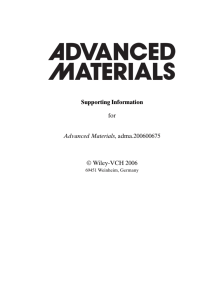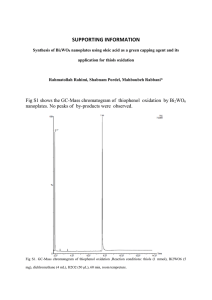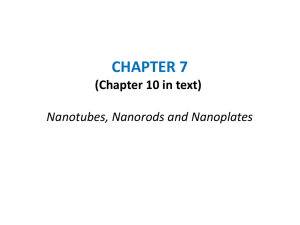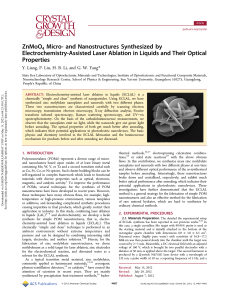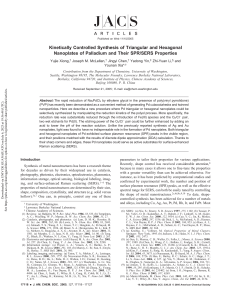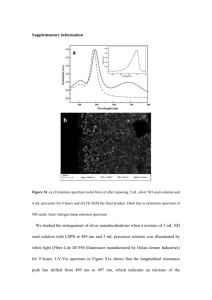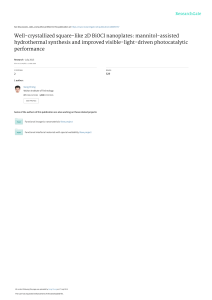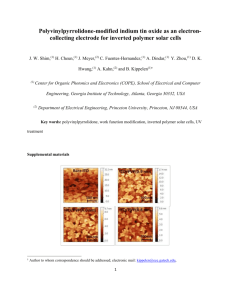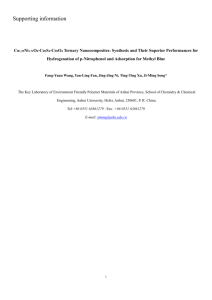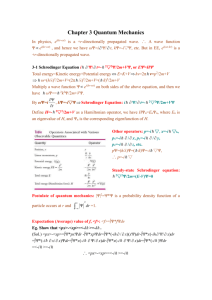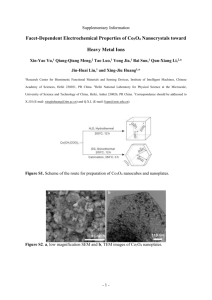Supporting Information
advertisement
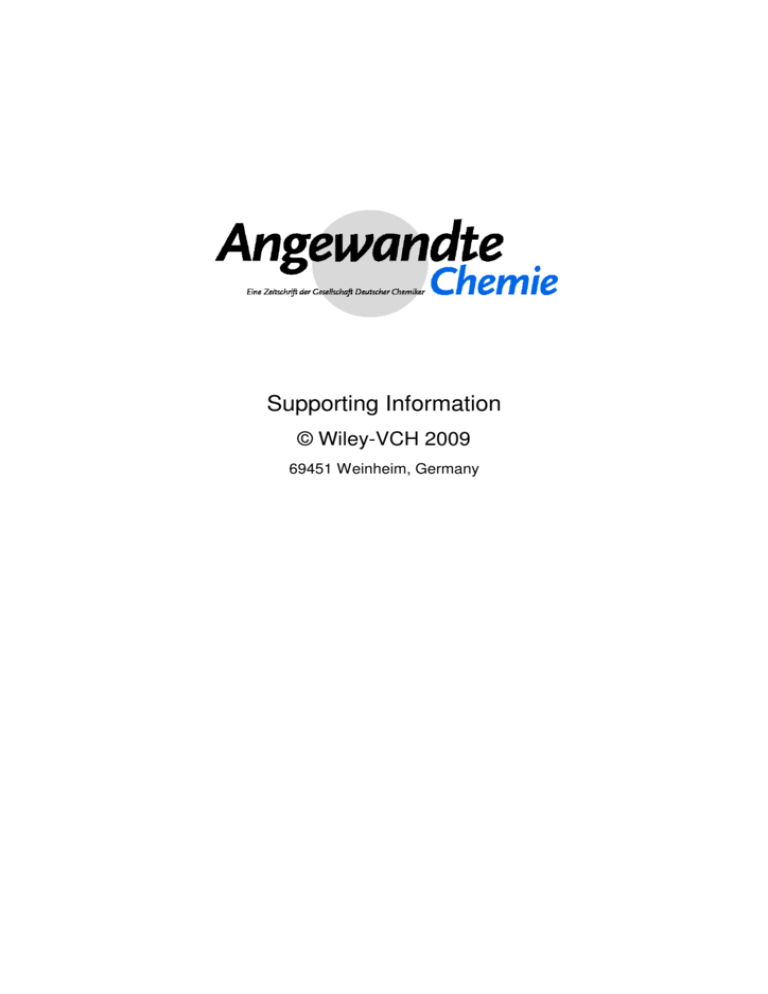
Supporting Information © Wiley-VCH 2009 69451 Weinheim, Germany Supporting Information Reconstruction of Ag Nanoplates by UV Irradiation: Tailored Optical Property and Enhanced Stability Qiao Zhang, Jianping Ge, Tri Pham, James Goebl, Yongxing Hu, Zhenda Lu, Yadong Yin* Department of Chemistry, University of California, Riverside, CA 92521 Email: yadong.yin@ucr.edu Experimental Chemicals. Hydrogen peroxide (H2O2, 30 wt-%) was purchased from Fisher Scientific. Silver nitrate (AgNO3, 99+%), sodium borohydride (NaBH4, 99%), and trisodium citrate dihydrate (TSC, 99%) were obtained from Sigma-Aldrich. Polyvinylpyrrolidone (PVP) K15 (Mw ~ 29000) was purchased from Fluka. Synthesis of Ag nanoplates. Triangular Ag nanoplates were prepared through a modified thermal process developed by Mirkin et al. [G. S. Metraux, C. A. Mirkin, Adv. Mater. 2005, 17, 412.] Typically, an aqueous solution of AgNO3 (0.1 mM, 25 mL), TSC (30 mM, 0.3 mL), PVP (3.5 mM, 1.5 mL), and H2O2 (60 µL) were combined and vigorously stirred at room temperature in air. NaBH4 (100 mM, 250 µL) is rapidly injected into this mixture, generating a pale yellow colloidal solution. After ~30 min, the colloid turns to a deep-yellow color, due to the formation of small silver nanoparticles. Within the next several seconds, the morphology continues to change from particles to nanoplates accompanied by the solution color changing from yellow to cyan. Ag nanoplates with different SPR wavelengths can be obtained by varying the synthetic conditions, e.g., concentration of PVP, TSC, and H2O2. UV-Irradiation process. Upon stabilization of the solution color, the as-prepared Ag nanoplates are centrifuged and washed with DI water. Irradiating the aqueous solution using a UV light with a wavelength of 365 nm gradually blue-shifts the plasmon band of the nanoplates, which can be directly confirmed by notable color changes. The UV light source is Spectroline Model SB-100P (120 V, 1.05 amp). The solutions are placed ~3 cm 1 away from the lamp. To stabilize the as-prepared sample, PVP (1 mL, 3.5 mM) solution was then injected into the solution. The aging process of silver nanoplates was carried out in daylight illumination at room temperature. Characterization. A Tecnai T12 transmission electron microscope (TEM) was used to characterize the morphology of the colloid in each step. Samples dispersed in water at an appropriate concentration were cast onto a carbon-coated copper grid, followed by evaporation under vacuum at room temperature. A probe-type Ocean Optics HR2000CG-UV-NIR spectrometer was used to measure the UV-Vis spectra of the solution to monitor the nanoplate evolution process. Figure S1. The thickness of Ag nanoplates after irradiating for different periods of time: (a) the original sample, 3.08 ± 0.57 nm; (b) 30 min , 4.15 ± 0.52 nm; ( c) 60min , 5.16 ± 0.47 nm; ( d) 90 min , 7.24 ± 0.78 nm; ( e) 125 min , 8.6 ± 1.08 nm. 2 Figure S2. UV-vis spectra of the as-synthesized Ag nanoplates (without UV irradiation) aged for 7 days, during which all samples experienced a ~ 100 nm blue-shift in plasmon bands. 3
